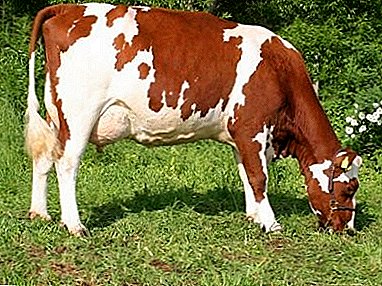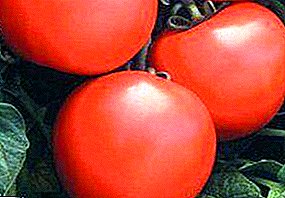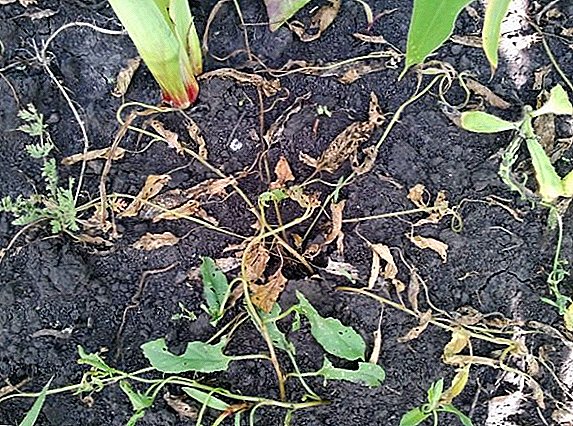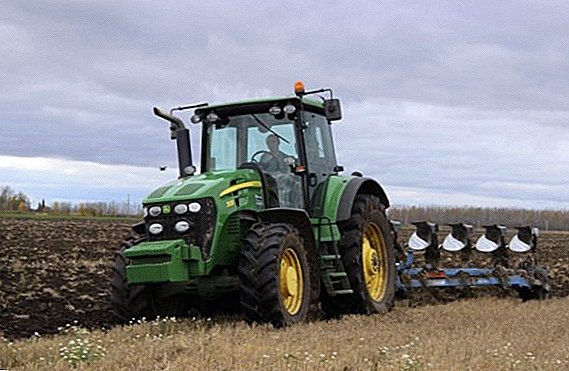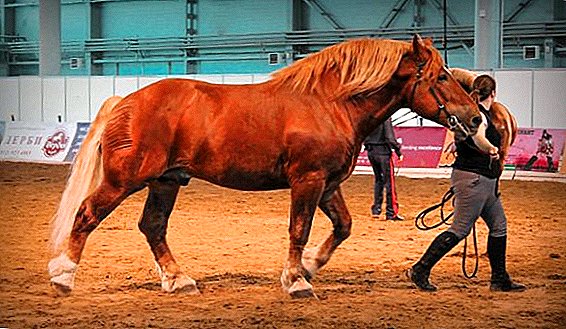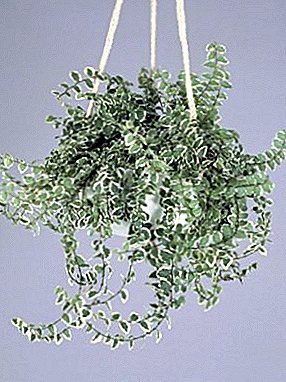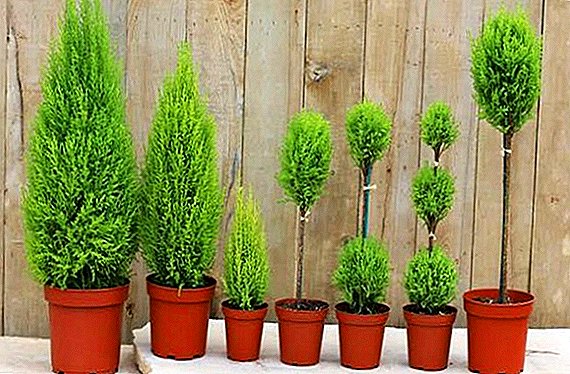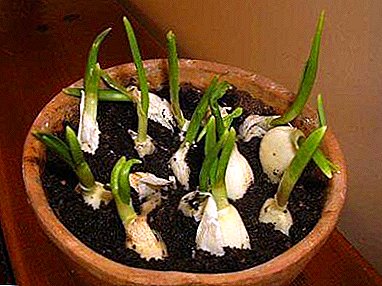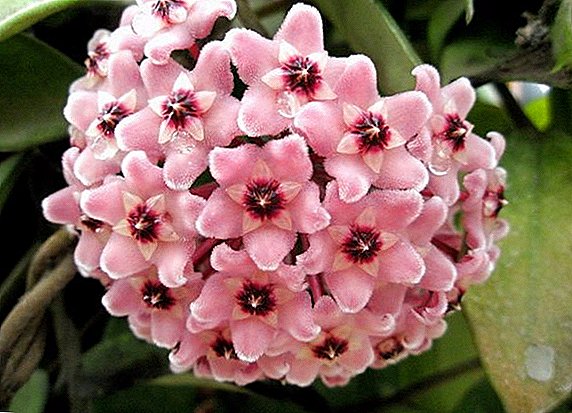 Hoya or, as it is also called, wax ivy is an evergreen vine of the Lastonev family. This genus got its name in honor of Thomas Hoy, a gardener from England. Today in the world there are about 200 species of plants. In the wild, hoiyu can be found in South China, India and Australia. Creepers spread along stony slopes and tree trunks.
Hoya or, as it is also called, wax ivy is an evergreen vine of the Lastonev family. This genus got its name in honor of Thomas Hoy, a gardener from England. Today in the world there are about 200 species of plants. In the wild, hoiyu can be found in South China, India and Australia. Creepers spread along stony slopes and tree trunks.
Hoya is curling and hanging, and some species have tendrils to cling to support. The leaves of wax ivy are oval or in the shape of a heart, while that of hoi compact has a twisted shape. They are dark green, two-colored and speckled.
At home most often grown hoya meaty. The shoots of this plant reach seven meters in length.
Like all plants, hoya is prone to disease and suffers from pests. Consider these problems of wax ivy in more detail.
Non-communicable hoi diseases, how to eliminate them
 Such diseases are caused by improper maintenance of the plant and care for it. Hoya does not like too low temperature, and heat, which, together with direct sunlight can cause burns on the plant. If the temperature is too low, the leaves will turn yellow, and new shoots grow very slowly. The consequences of a sharp temperature drop can be cracks in the trunk.
Such diseases are caused by improper maintenance of the plant and care for it. Hoya does not like too low temperature, and heat, which, together with direct sunlight can cause burns on the plant. If the temperature is too low, the leaves will turn yellow, and new shoots grow very slowly. The consequences of a sharp temperature drop can be cracks in the trunk.
If you do not follow the rules of watering hoy, the stagnation of water in the soil can lead to rotting of the roots, as a result of which they disappear. And if the plant does not have enough lighting, the shoots will be excessively stretched. Carefully and responsibly should be taken to the hoya fertilizer. If fertilizing is used incorrectly, the leaves and flowers of the plant may become discolored. Do not fertilize hoyas in hot weather.
Non-infectious diseases of wax ivy can be treated with Epin and Zircon. In the case of overwetting or hypothermia, Epinay is sprayed with hoya leaves and stalks. The effect will be achieved 10 days after the start of use of the drug. "Appin" is afraid of sunlight, so do not put the plant under direct rays during processing. "Zircon" is used to treat hoyas when the plant is over dried. It gives an instant effect that lasts for 10 days.
“Zircon” restore the hoya root system, and “Epinom” - the aboveground part of the plant. Both drugs are well help wax ivy recover from severe stress.
Hoya does not bloom
 If the home hoya does not bloom, there are several reasons for this, so before you do something, you need to understand what exactly provoked the problem in your case.
If the home hoya does not bloom, there are several reasons for this, so before you do something, you need to understand what exactly provoked the problem in your case.
The main reasons why ivy does not bloom are as follows:
- plant age;
- lighting;
- wintering conditions;
- support;
- top dressing;
- watering;
- soil composition;
- pot size
Lighting. The best illumination for the hoi is the south or southeast window. But there are exceptions: there were cases when wax ivy bloomed on the western windows and even in dark corridors. If your hoya does not bloom, move it to where it will receive more light.
Important! A lot of light tolerates hoya fleshy very well, but even her leaves can burn. Therefore, in the summer, be sure to curtain the window with tulle. No need to take hoya to the balcony if it is not glazed.Wintering conditions. As experience shows, hoya loves cold wintering with minimal irrigation and without feeding and fertilizer. But often it blooms in winter and without special conditions. There were cases when the wax ivy did not bloom for a long time, but, after wintering at a temperature of + 10-14 ° С, it began to bloom on the east side.
Support. Hoya does not like to be tied to a support so that the shoots descend. First you need to grow long shoots and only then gradually bind the plant to the support. The main thing is to properly form a home hoyu. No need to remove old flower stalks.
 Watering. Wax ivy does not need frequent watering. In between water procedures, the soil should be completely dry. In the cold season, hoyu is rarely watered, in the summer it is sprayed a little more often and regularly.
Watering. Wax ivy does not need frequent watering. In between water procedures, the soil should be completely dry. In the cold season, hoyu is rarely watered, in the summer it is sprayed a little more often and regularly.
Did you know? Hoya does not like cold water even in summer. At this time of the year, it must be watered with water at room temperature, and in winter with warm water.Pot size Best blooming wax ivy in small pots. The main thing is that its roots completely fill the space of the container and the plant was cramped there. Do not forget about this during landing. It is best to have wax ivy grow in the same pot for many years. An adult plant comfortably feels in a container with a diameter of 15-20 cm. Hoya may not bloom for a couple of years, that's okay - this is its normal state.
Top dressing and soil. The soil in which hoya grows must be loose and breathe well. Usually it is sand, peat and substrate mixed in equal parts. Sometimes the plant is fertilized, but not often. Some feed hoya with mullein so that it blooms well. For wax ivy, fertilizing is also suitable, which is given to succulents and cacti.
Important! If you want your hoya to bloom profusely in the spring, dry it in a cold time with an earthen ball of wax ivy.
Growth slows down, leaves are pale green
In the hot summer, if hoya is standing on a sunny window, she can "burn" and discolor the leaves, due to overheating, the plant very often slows growth.
Leaves dry, turn pale, curl
 If the leaves of wax ivy fade, dry and curl, This may be due to the low temperature in the room where hoya is located. It is also possible that This is due to the bright sun.
If the leaves of wax ivy fade, dry and curl, This may be due to the low temperature in the room where hoya is located. It is also possible that This is due to the bright sun.
Leaves fall
If wax ivy leaves fall, there may be several reasons. For example, excessive moisture appeared in the ground, or do you moved hoya to another place. Leaf fall may occur due to severe hypothermia in winter, so do not put the plant on a cold window and do not water it with cold water.
Flowers fall
The fall of the buds and the already blossoming flowers in wax ivy can provoke dry and hot air.
Leaf deformation
Hoya, which is in the stage of active growth, can grow leaves of irregular shape. Such deformation occurs due to poor watering. Give your flower more moisture and the problem will go away by itself.
Bacterial diseases hoi, how to get rid of them
This type of disease is caused by pathogenic bacteria. They penetrate the damaged areas of the plant and spread throughout the vascular system of hoya. The main symptoms of ivy damage by bacteria are dried branches and the trunk with formed ulcers, as well as reddish spots and watery spot on the leaves. Also, the leaves can become black-brown with a yellowish tinge.
 When the damaged area softens, a sticky liquid with an unpleasant odor will be released from it. To prevent bacteria infection, you need to monitor the integrity of the trunks and leaves, avoiding the appearance of cuts on them. After pruning, be sure to disinfect with copper based preparations.
When the damaged area softens, a sticky liquid with an unpleasant odor will be released from it. To prevent bacteria infection, you need to monitor the integrity of the trunks and leaves, avoiding the appearance of cuts on them. After pruning, be sure to disinfect with copper based preparations.
Treatment methods will be effective only when the local lesion and bacteria have not yet reached the vascular system of hoya. The diseased plant must be isolated, put in a room with dry air, not sprayed. If you notice the disease in its initial stages, you can defeat it by removing all the affected parts of the hoya and capturing some healthy tissue.
Before each cut, treat the scissors or knife blade with an antiseptic. Then sprinkle hoy bordeaux mixture or preparations containing copper. If the processing has not brought results, the flower must be destroyed.
Bacterial wilt
This disease is manifested in wilting, which first affects the tops of the shoots, and then goes to the rest of the plant. Bacteria enter the hoy vessels, secrete pathogenic components, inhibit the flow of water.
Bacterial spotting
Spots on the leaves appear on the dead spots. They do not have clearly defined edges, the structure is rather vague. The spots may be oily or glassy. They quickly spread over the entire area of the leaf, which then dries, turns yellow and falls. If hoya is in a humid and warm environment, this greatly increases the rate of spread of the disease.
Rot

They are manifested in the softening and dying off of the plant tissues, then on the affected place a rotten slush with an unpleasant odor is formed. The most common rot affects plant species with large fleshy leaves. A hotbed of rot can occur on any part of ivy: flowers, leaves, roots. The reason for the occurrence usually lies in violations of conditions of detention, such as high humidity of the soil, cold room, an excess of nitrogen fertilizers.
Hoi mushroom diseases, their treatment methods
Such diseases arise as a result of the defeat of the plant by imperfect phytopathogenic fungi. Characteristic symptoms: the flower stops growing, the leaves wither and turn yellow, the roots become brown and soft. In some cases, the leaves appear powdery mildew in the form of gray spots, which over time significantly increase in size. When the disease is started, the spots appear on the flowers and stems. Gray rot consists of spores and mycelium. First of all, it appears on the drying shoots and leaves, and later affects the healthy parts of the hoya.
To overcome the disease, you need to transplant the flower in fresh soil and strictly follow the rules of watering. We recommend using preparations based on thiram and benamyl. To get rid of powdery mildew once and for all, it is also necessary to use fungicides: benlat, copper carbonate, sulfur, zinc, manganese. An excellent tool in the fight against gray rot is Bordeaux mixture. Spray her hoya with one percent solution.
Anthracnose
 Most often, these fungi infect weak plants: who have mechanical damage and undergoing stress. All above-ground parts of the hoya come under attack, but the focus of the disease always begins with the leaves. The spots on them look completely different. It depends on the type of fungus that caused the disease.
Most often, these fungi infect weak plants: who have mechanical damage and undergoing stress. All above-ground parts of the hoya come under attack, but the focus of the disease always begins with the leaves. The spots on them look completely different. It depends on the type of fungus that caused the disease.
When the source of infection is Kabatiellazeae, small yellow specks appear. If you look at them through a magnifying glass, inside you can see a black or brown dot. As the disease progresses, the stain increases, instead of a dot, a bezel appears with a gray spot inside.
If hoyu was struck by the Colletotrichumorbiculare mushroom, then you will see brown spots on the leaves with a yellow border. When the disease progresses, the spots merge, then the affected areas dry out, and holes are formed in the leaves.
Colletotrichumtrichellum mushroom leaves large brown spots with a yellow or gray tint and gray spores.
Anthracnose usually affects the plant in warm and humid weather, as the mushrooms feel good at 90% air humidity and 22-27 ° C. The disease is provoked by frequent spraying of the plant if hoya does not dry out for a long time and lives in a greenhouse.
Fungal spores are spread by raindrops, insects, wind. Lack of potassium and phosphorus in the body of ivy contributes to the disease.
To effectively deal with anthracnose, regularly steam the soil of the plant, reduce the humidity of the air, destroy the affected leaves, spray hoyu with preparations "Kvadris SK", "Hom", "Strobe", "Abiga-Peak".
Root and stem rot
 With this disease, hoya stops growing, the leaves dry out and fall off, then the root decays, and the plant dies. At first it seems that hoy just does not have enough watering, but after normal soil moisture it becomes clear that this is not the problem, the leaves continue to dry out and fall off.
With this disease, hoya stops growing, the leaves dry out and fall off, then the root decays, and the plant dies. At first it seems that hoy just does not have enough watering, but after normal soil moisture it becomes clear that this is not the problem, the leaves continue to dry out and fall off.
It is very difficult to identify the disease at an early stage, because the wax coating on the leaves makes them look healthy for a long time, and the root rots quickly. Lesions on the stem can be dry and wet. Rotten roots are black or gray. They can also be wet or dry.
In order to prevent and treat rot, the soil should not be too wet.especially if the room has a low temperature. The soil for planting needs to be sterilized. In case of a rot disease, the affected plant is treated with Kuproksat, a colloidal sulfur or Bordeaux mixture, and if these funds do not help, ivy will have to be destroyed.
Cortical growth on the leaves
This disease manifests itself by fading leaves and gray bloom; a crust forms on the inside of the leaf. The startled escape ceases to grow, but if you take the necessary measures in time, then hoya will survive. Further growth of wax ivy can slow down, and a new shoot will start moving next season. Hoya leaves will continue to be healthy if all conditions of detention can be met.
The sequence of treatment of this disease: First, waxy ivy leaves should be wiped with alcohol, then sprayed with "Hom" or "Ordan". After processing, place the plant in a warm place.
Gray rot
 This fungus affects all green parts of the plant. On them brown spots with a greenish or gray raid will be visible. After some time, the spots will look like dry rot, necrosis of blood vessels and tissues will occur. The affected parts of the plant die off.
This fungus affects all green parts of the plant. On them brown spots with a greenish or gray raid will be visible. After some time, the spots will look like dry rot, necrosis of blood vessels and tissues will occur. The affected parts of the plant die off.
The fungi that cause this disease are wound parasites. They get inside the stalks and leaves through the wound. Also these mushrooms like musty air. Disputes are spread by wind, dirty tools and precipitation. Favorable temperature for the development of the disease - 17-25 ° C.
The ways to combat and prevent this disease are as follows: disinfect working tools and soil, air the room and reduce humidity. Do not forget about the lighting - hoya should not grow in a dark place.
Black fungus
A black fungus settles on the secretions of aphids, powdery worms and whiteflies. It is a dry plaque, which is not life-threatening for the plant, but clogs the pores of the leaves, which is why hoya "does not breathe," stops growing and weakens.
Treatment is to destroy pests. Wipe the flower with a damp cloth dampened in soapy water and then treat it with a fungicide.
Mealy dew
 This disease is quite rare in domestic hoi. More often it is faced by those who grow this plant in greenhouses or in the open air. Leaves appear little white loose spots that can be easily wiped off. But if nothing is done, the spots will grow until they occupy the whole area of the sheet.
This disease is quite rare in domestic hoi. More often it is faced by those who grow this plant in greenhouses or in the open air. Leaves appear little white loose spots that can be easily wiped off. But if nothing is done, the spots will grow until they occupy the whole area of the sheet.
The appearance of powdery mildew contributes to moist air, excess fertilizer with nitrogen and strong temperature drops.
Prevention and treatment: in case of a weak injury, tear off the diseased leaves and normalize the conditions of detention. If the disease is in its advanced form, use the preparations "Kvadris SC", "Topaz", "Tiovit", "Bravo".
Downy mildew
Another name for this disease is peronosporosis. Hoya is rarely affected by this disease. They suffer, as a rule, ivy growing in greenhouses and in the fresh air.
On the leaves appear yellow spots, which eventually change color to brown. On the underside of the leaves gray spots are formed, they then turn into black dots.
If you let everything take its course, inevitably yellowing and falling leaves, and the causative agent of the disease will fall into the vessels of the plant, which will lead to wilting hoy.
Prevention and treatment: Be sure to disinfect the soil before planting, air hoyu and timely remove diseased leaves. In case of a disease, treat the lower part of the leaves with the preparations "Ordan", "Khom", "Kvadris SK".
Black spot
 The spots on the leaves that appear in this disease are shiny and bulging. They are called - stroma. How the stroma will look depends on the pathogen. But despite the slight differences in appearance, they all develop rapidly in high temperature, high humidity and poor lighting.
The spots on the leaves that appear in this disease are shiny and bulging. They are called - stroma. How the stroma will look depends on the pathogen. But despite the slight differences in appearance, they all develop rapidly in high temperature, high humidity and poor lighting.
Treatment: spray the diseased plant with "Kvadris SK", "Abiga-Peak", "Maxim".
Rust
Symptoms of the disease: spots of red, yellow or orange appear on the top of the leaf, and on the inside there is a congestion of brown and orange spores. The leaf turns yellow, dries and then dies off. The disease spreads and progresses at high humidity and a temperature of 10-20 ° C.
Prevention and treatment: It is not necessary to spray hoyi species that are susceptible to rust, because the water droplets on the leaves contribute to the maturation of the spores. When watering it is not necessary to wet the aboveground parts of the plant. If hoya is sick, remove the affected leaves and spray the plant with Vectra, Kuproksat, Topaz, Vectra or Bordeaux.
Fomoz
 Favorable environment for the fungus, the causative agent of this disease - wet and cool weather. The disease begins with the roots, and then spreads throughout the plant. Leaves form gray or colorless spots with spores in the middle. Then the leaves die off and fall off.
Favorable environment for the fungus, the causative agent of this disease - wet and cool weather. The disease begins with the roots, and then spreads throughout the plant. Leaves form gray or colorless spots with spores in the middle. Then the leaves die off and fall off.
Prevention and treatment: carry out soil disinfection "Fundazol". After that, treat the plant with a preparation containing copper, and isolate the hoyu for the duration of the treatment.All other plants that were in contact with her, process. Leaves on the diseased hoi remove to prevent the reproduction of fungi.
Fusarium wilt
The disease proceeds in one of two ways: only the stem can wither or even rot the roots.
In the affected wax ivy, they first lose the turgor of the crown and then the escape. The vessels are clogged, become dark at the cut of the stem. To save the plant, it is necessary to cut off and root the top of the shoot. At the onset of the disease, the large roots remain healthy, and the small ones rot first.
If the soil and the air are wet, and the temperature is above 18 ° C, then the disease is very active.
Did you know? Fusarium wilt manifests itself in wax ivy just like tomatoes and cucumbers.Prevention and treatment: Before planting the plant, it is necessary to sterilize the soil and inventory, add "Fitosporin" or "Trichodermin" to the soil. At the onset of the illness, treat hoya with Vectra or Fundazole.
How to deal with the main pests of hoy, methods of dealing with them
 Hoihe diseases provoke fungi, bacteria, viruses, pests and various external factors. Diseases can also occur as a result of improper care: Increased heat and humidity contribute to progressive carbonaceous diseases, and insect parasites do well in hot and dry conditions.
Hoihe diseases provoke fungi, bacteria, viruses, pests and various external factors. Diseases can also occur as a result of improper care: Increased heat and humidity contribute to progressive carbonaceous diseases, and insect parasites do well in hot and dry conditions.
In the fight against tick and whitefly will help drug Sunmite. It is effective at all stages of pest development and is not addictive. The drug starts immediately after its use and remains active for one and a half months.
From shchitovki, mite, thrips, whitefly and aphids have proven themselves well Aktara and Actofit. Chervtsov is best removed by hand with a brush dipped in alcohol and spray the affected parts of the plant with preparations based on light oils. Well help and a mixture of drugs "Mospilan", "Confidor-maxi", "Aktara" on 1 mg. Each drug must be diluted separately in 330 ml of water, and then mix everything.
To radically get rid of the poduras, you need to dry the soil, and then sprinkle it with tobacco dust or lime.
White fly
This butterfly looks like a normal mole. Its greatest harm is caused by the larvae who drink the juice from the leaves of the hoy. Adult butterflies sit on the back of the sheet. Small round spots appear on the affected areas. Soon the leaves turn brown and die off.
Redhead
 This pest is not larger than 5 mm with a wax cover. The larvae of the chertz crawl all over the hoy and stick to the trunks and leaves. Moisture and heat - the most favorable conditions for the reproduction of the worm. The most dangerous pest is the mealybug. The insect size is 3.5 mm and the color is bright pink or orange. After defeating ivy with a mealybug, a white bloom appears on the leaves, and hoya leaves quickly turn yellow and fall off. New shoots grow slowly. Soot fungi can settle on the pest excretions.
This pest is not larger than 5 mm with a wax cover. The larvae of the chertz crawl all over the hoy and stick to the trunks and leaves. Moisture and heat - the most favorable conditions for the reproduction of the worm. The most dangerous pest is the mealybug. The insect size is 3.5 mm and the color is bright pink or orange. After defeating ivy with a mealybug, a white bloom appears on the leaves, and hoya leaves quickly turn yellow and fall off. New shoots grow slowly. Soot fungi can settle on the pest excretions.
Red spider mite
This arthropod insect can be confused with a small spider. Live mite on the lower parts of the leaves. The parts of the hoya affected by the spider mite are covered with yellow spots and die. Ticks weave a web between the leaves and the stem. Red spider mite propagates under high temperature and dry air. Therefore, in order to avoid infection with a spider mite, spray the plant in the heat.
Nematodes
Small colorless worms up to one centimeter. When hoya is affected by a nematode, galls are formed - swellings on the roots, and pests live in them. Gauls can be of different sizes, the size depends on the degree of damage and how weak the plant is. When infected with nematodes hoya stops growing, the leaves turn yellow. If you do not take proper measures in time, the plant will die. This is because the roots can no longer provide the hoya with all the necessary substances.
There is also a species of stem nematode. If they infect hoyu, the shoots and stems of the plant develop ugly, the leaves wrinkle, the stem core becomes brown.
Poddur
 This white-winged insect can jump. A pest appears in a highly moist soil and affects the aerial part of the hoya.
This white-winged insect can jump. A pest appears in a highly moist soil and affects the aerial part of the hoya.
Aphid
Aphids can be confused with moths, only it has a different color range: from lime to black. The size of an adult aphid is about 3 mm. The insect lives in large colonies. Aphid provokes fungal diseases. Hoya, affected by aphids, dies quickly, so the main thing is not to miss the moment and quickly destroy the pest.
Initially aphid appears on the tops of the shoots, new branches and buds. There is also a flying and wingless aphid, the larvae of which can be found from the bottom of the sheet.
Prevention and treatment includes the treatment of the plant with Iskara-bio, Aktara, and Akarin. At the slightest sign of infection, it is necessary to isolate ivy, and, if the aphid has not yet spread throughout the plant, arrange a warm shower with soap for it.
Thrips
 Both adult thrips and their larvae harm the hoi. An adult insect has a flat body, two pairs of wings and a sucking oral organ. Trips lay eggs directly in the flesh of the leaves, up to 100 pieces at a time. They are black and visible to the naked eye, yellow larvae emerge from eggs in two weeks. At home, these pests grow and develop year round.
Both adult thrips and their larvae harm the hoi. An adult insect has a flat body, two pairs of wings and a sucking oral organ. Trips lay eggs directly in the flesh of the leaves, up to 100 pieces at a time. They are black and visible to the naked eye, yellow larvae emerge from eggs in two weeks. At home, these pests grow and develop year round.
Thrips infect leaves. From the bottom of the sheet they form colonies, and dots appear on top of the leaf plate. Soon the leaf becomes silver and dies, hoya bare. Soot fungi can settle on the feces of thrips. When the plant blooms, the pests also settle on flowers. Because of this, the inflorescences do not bloom, grow poorly, become ugly. Propagation of thrips contributes to the high temperature at low humidity. Prevention and treatment: Before treating with chemicals, remove all flowers on the plant so that the pests do not have cover.
For spraying use drugs "Dantop", "Aktellik", "Mospilan", "Confidor-maxi", "Fitoverm", "Commander".
Shchitovka
 Shchitovki larvae attach to the stems and leaves of the plant and become covered with a waxy bloom, like a shield. There are many varieties of this pest, they all feed on plant sap. The leaves of the affected hoy turn yellow at first, and then dry out and die. Wax ivy will die if time does not take steps to destroy the scythes.
Shchitovki larvae attach to the stems and leaves of the plant and become covered with a waxy bloom, like a shield. There are many varieties of this pest, they all feed on plant sap. The leaves of the affected hoy turn yellow at first, and then dry out and die. Wax ivy will die if time does not take steps to destroy the scythes.


